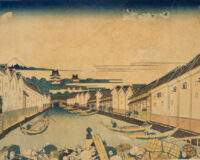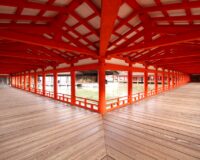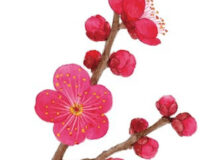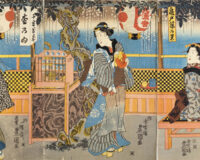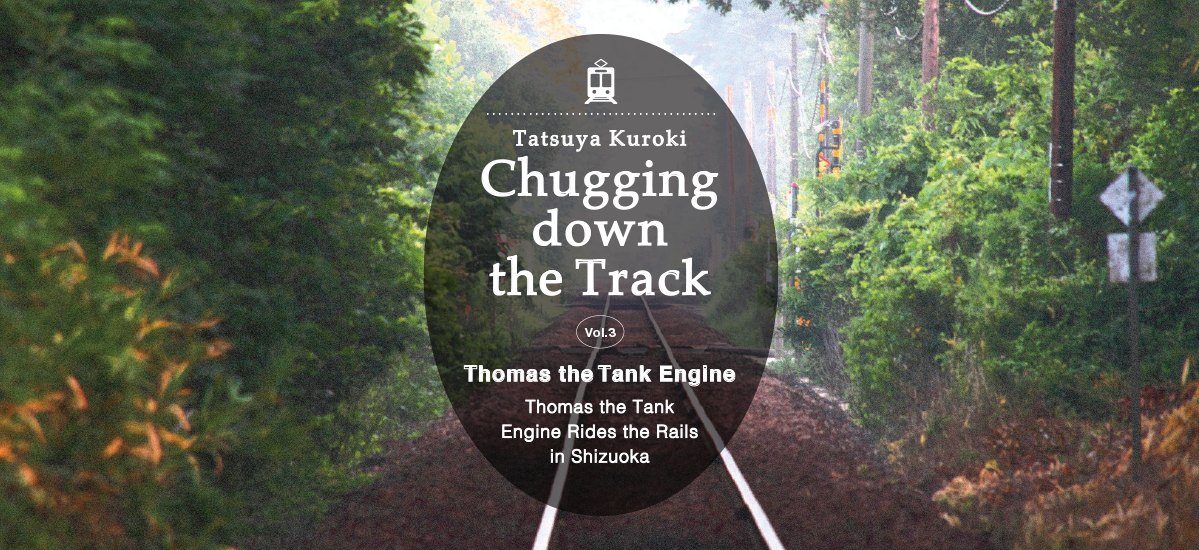
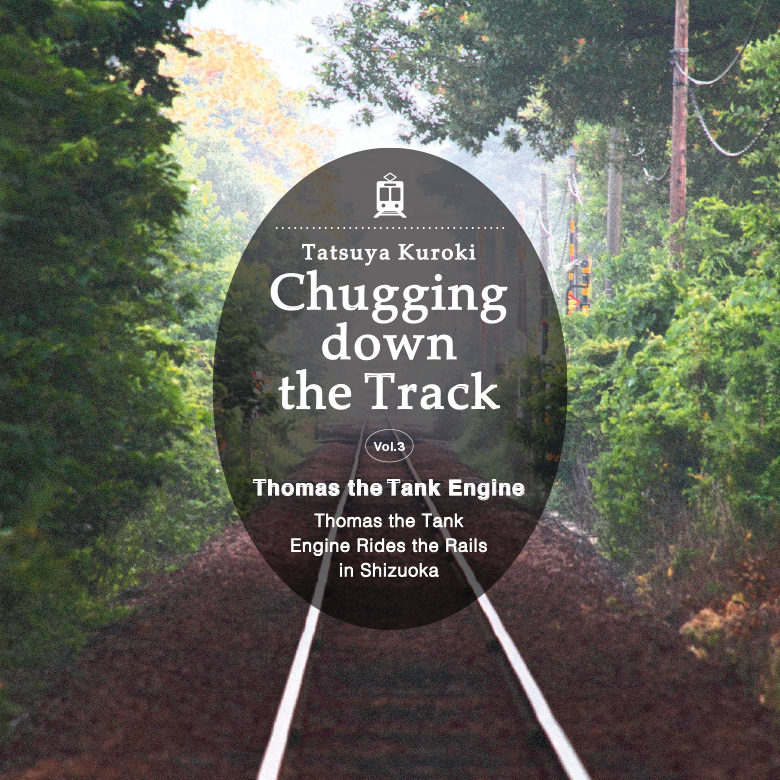
Japan has one of the world’s most developed railway networks, and is criss-crossed with fascinating train routes. Railway journeys allow travellers to experience the true flavour of each region in ways no other form of transport can offer. In this series, Tatsuya Kuroki shares his train travel tips and experiences with us.
This time, we enjoy a day out with the world’s favourite steam locomotive, Thomas the Tank Engine!
Text and Photos : 黒木達也 Tatsuya Kuroki / English Version : Judy Evans
Keyword : Rail Travel Journal Series / Train Travel / Railways / Steam Locomotives / Oigawa Railway / Thomas the Tank Engine / Southern Alps Abt Line
Popular worldwide, Thomas the Tank Engine first appeared in the UK as a character in children’s storybooks. The plucky steam locomotive gained a huge following in Japan once the books and, later, the animated TV series became available here. It’s even possible to see Thomas the Tank Engine “in real life”, chugging along the tracks of Shizuoka Prefecture’s Oigawa Railway. The railway’s “Day Out With Thomas” events operate on a seasonal basis, with tickets in high demand!
Japan’s Only Railway with Daily Steam Locomotive Services
The Oigawa Railway Company, a private railway in central Shizuoka Prefecture, operates from Kanaya Station on the Tōkaidō Line, passing via Senzu Station all the way through to Ikawa Station, Shizuoka Prefecture’s highest station in the foothills of Japan’s Southern Alps.
Operating a railway in such terrain is by no means straightforward. While the Honsen (main line) section between Kanaya and Senzu stations is a regular, standard-width electrified line, the Ikawa Line, the section continuing through from Senzu to the terminal at Ikawa Station, is a narrow-gauge railway with steep grades and sections of Abt-system rack railway track.
Steep terrain is not the only challenge facing the Ōigawa Railway. Although the company operates successfully with electric rolling stock transferred from major railways in the Tokyo and Kansai regions, the continued decline in the local population and the growing use of private vehicles have meant fewer passengers on the company’s trains. This is where the steam locomotives come in. To boost flagging passenger numbers, the Ōigawa Railway has been focussing increasingly on steam locomotive operations, currently operating four restored steam engines. The company was facing financial crisis when Thomas the Tank Engine began plying the rails in 2013, but this popular service has since provided a real boost to operations.
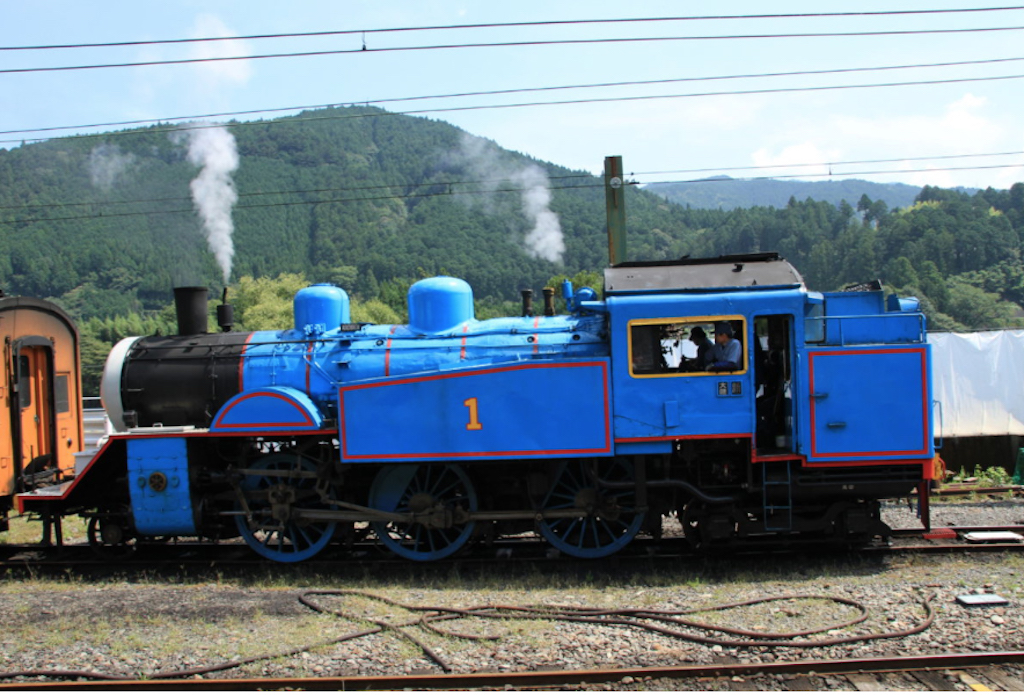
The Ōigawa Railway Company gained permission from Sony Creative Products (the Sony-associated company that owns the licensing and distribution rights in Japan) to bring Thomas the Tank Engine to life. Teaming up with the Oigawa Railway company, with its proven track record in operating steam locomotives, has worked out equally well for Sony Creative Products. The opportunity to see and ride on a real Thomas the Tank Engine train has made this loveable steam engine character all the more popular in Japan.
Thomas the Tank Engine Schedule
Operating between Shin-Kanaya Station (where the depot and engine house are located) and Senzu Station, the regular steam locomotives of the Ōigawa Railway run one return trip each weekday. That number rises to three return trips per day on weekends and public holidays, as well as through the busy tourist times. However, this regular steam engine service is the “Kawane-ji”, not Thomas the Tank Engine.
Thomas, the “Really Useful Engine” of storybook fame, operates mainly on Saturdays and Sundays. Additional days are tacked onto the weekends through the busy tourist periods, with services operating daily in mid-August when many people (and all school children) are on summer vacation. Tickets are in such demand that they are allocated on a lottery basis during the busiest times, and can only be purchased through an online ticketing agency.
Due to the popularity of Thomas, his fellow storybook characters, James (the “Really Splendid Engine”) and friend Bertie the bus, have also been pressed into service. Both Thomas and James pull wonderfully retro refurbished Japan National Railways passenger cars made in the 1940s, the heyday of steam rail travel in Japan. It’s worth noting that these passenger cars, faithful to their era, do not have modern features such as air-conditioning. When there are too many coaches for the steam engines to handle on their own, an electric locomotive is coupled to the rear of the train to push.
Tour packages are also popular. One tour takes passengers as far as Shin-Kanaya Station by bus, where they then transfer to Thomas the Tank Engine, continuing as far as Senzu to spend the night at a nearby onsen (hot springs).
Departing Shin-Kanaya Aboard Thomas the Tank Engine
Thomas’ trips depart from the locomotive’s home station of Shin-Kanaya, one station along the line from Kanaya Station. After leaving Shin-Kanaya, the train takes passengers through the suburbs and heads out into the open countryside. The Ōigawa River soon comes into view, the train tracks running alongside the river for a considerable distance. Thomas makes a stop at Ieyama Station, one of the principal stations along the route and one of Shizuoka Prefecture’s best-known cherry blossom viewing spots, popular with visitors in spring.
Leaving Ieyama Station, the train passes through immaculately-tended tea plantations, then across our first railway bridge, the Ōigawa No.1 Railway Bridge.
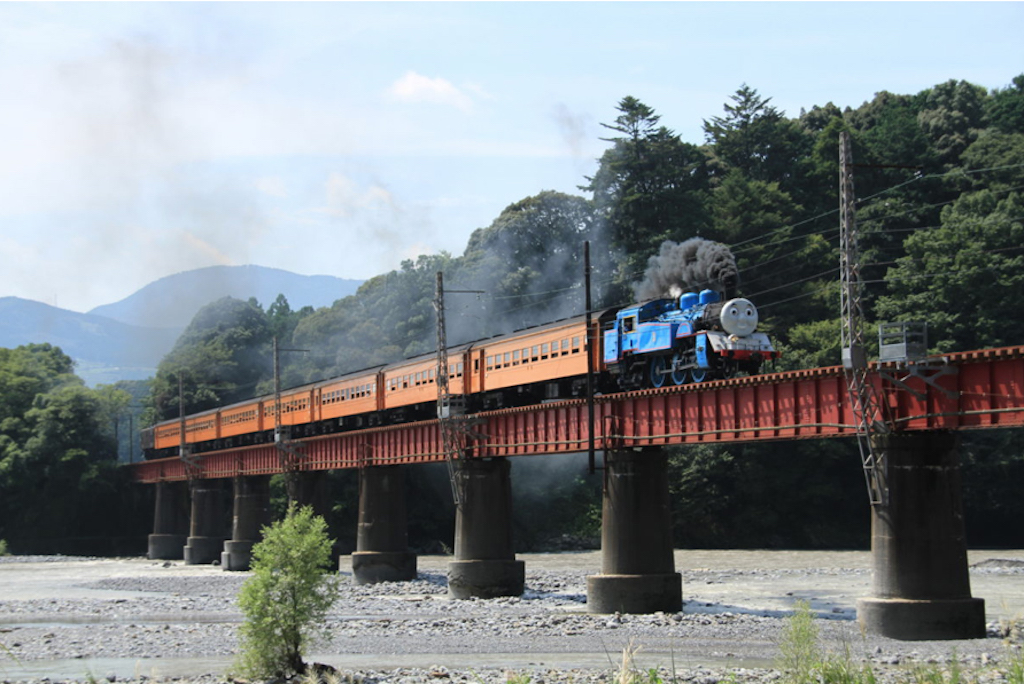
Nestled at the eastern end of the Ōigawa No.1 Railway Bridge is the little settlement of Kawane Onsen. Passengers on the train can look out for bathers waving from the pools at this hot spring resort, which has public bath facilities for day trip visitors, a swimming pool and a train viewing area.
There are another couple of railway bridges to cross before reaching the final station, Senzu, which takes over and hour to reach. On board the train, food and snack carts regularly pass through the passenger cars selling a range of products, from themed obento boxed lunches to railway merchandise. A crew member keeps passengers entertained with interesting information and anecdotes about the sights along the tracks.
Senzu is the final stop for trains out of Kanaya, and is also where the Southern Alps Abt Line (the Ikawa Line) begins. This Abt-system rack railway was built in steep terrain to carry workers and materials for the construction of hydro-electric dams on the river. Passengers are able to transfer to this narrow-gauge railway that takes them up the Ōigawa River and through forest-clad hills.
A highlight of the journey is Okuōikojō Station. Surrounded by water and built atop high cliffs, this station perches on a finger of land jutting out into a reservoir lake, Okuōi-ko. With the sliver of land that the station is built on being so narrow, the station platform itself extends out over the lake far below. The scenery here on a fine day is breath-taking.
The “Thomas Fair” Children’s Event at Senzu Station
A popular event, the Thomas Fair, is held at Senzu Station on the days that Thomas operates, from early summer through the end of November. Visitors travel to join in the festivities not only by train (either steam train or regular train), but also by car.
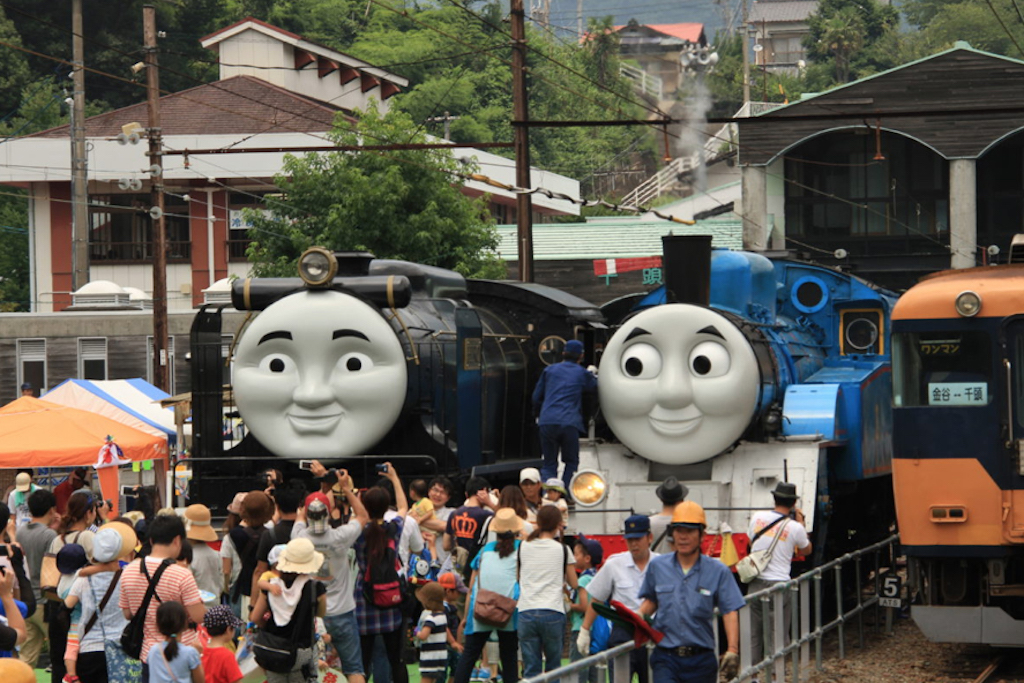
Thomas’ other friends, “Master of the Railway” Hiro, best friend Percy, and the Troublesome Trucks are on display at the Thomas Fair. A big hit with the children, the fair offers plenty of photo opportunities and themed merchandise. Compared with Thomas’ home station Shin-Kanaya (where there’s not much to see), normally quiet Senzu Station hums with activity on these days. Not everybody can get tickets to ride the Thomas train, but plenty of regularly-timetabled trains head to Senzu as well, so there’s no need to miss the fun. In fact, getting photos of Thomas chugging along the tracks from vantage points along the railway is lots of fun, too.
Another highlight at Senzu Station is watching the locomotives being turned on the railway turntable.
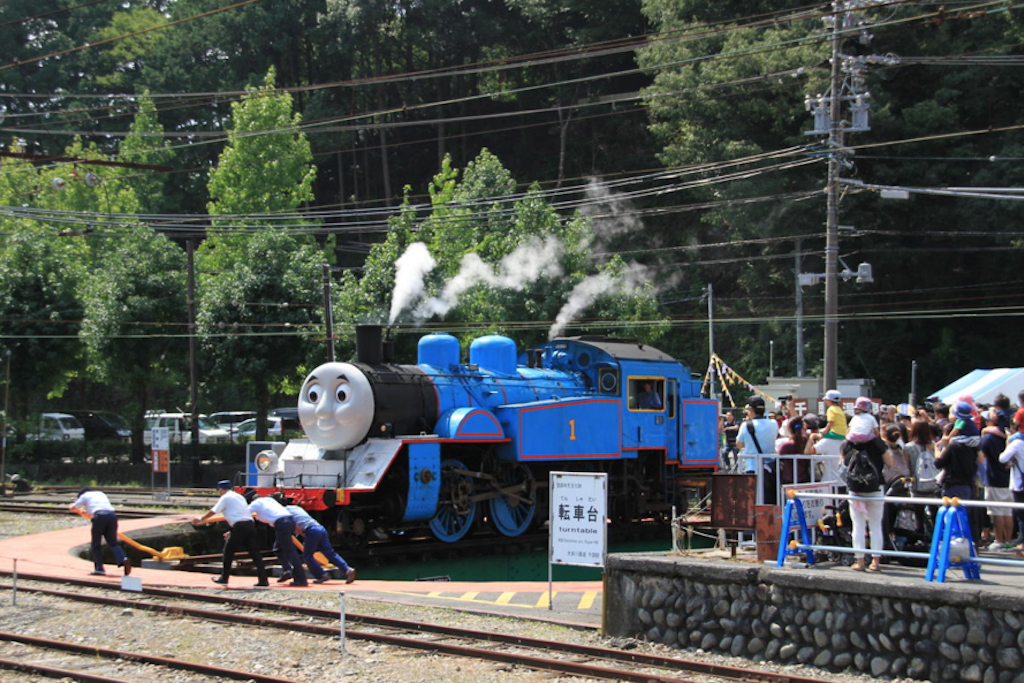
Senzu Station maintains a Ransomes and Rapier turntable manufactured in the U.K., possibly the oldest of its type still in operation. The turntable had lain idle for many years, but is now fully refurbished and back in business, much to the delight of railway fans big and small, who wait with cameras at the ready to get a close-up look at the turning operation.
Before Thomas can head back to Shin-Kanaya Station, the passenger cars are uncoupled and the locomotive driven onto the turntable. The turntable is rotated manually, pushed by station staff members. Prior to the refurbishment of the turntable, locomotives could not be turned and had to make their way back to Shin-Kanaya Station backwards, passenger cars in tow.

■
Ōigawa Railway Website: http://oigawa-railway.co.jp/access
Steam Locomotives of the Ōigawa Railway
There are four steam locomotives regularly operating on the Ōigawa Railway, with a fifth currently out of service for maintenance. Almost ninety years have passed since these steam locomotives were commissioned in the 1930s and early 1940s, so maintenance and repairs are constant. The locomotives are as follows:
JNR Steam Locomotive Class C10-8
Built in 1930. After operating from the Japan National Railways (JNR) Shin-Koiwa (Tokyo) engine depot, served throughout the country. Last employed on the Yamada Line in Miyako City, Iwate Prefecture. Transferred to the Ōigawa Railway in 1994.
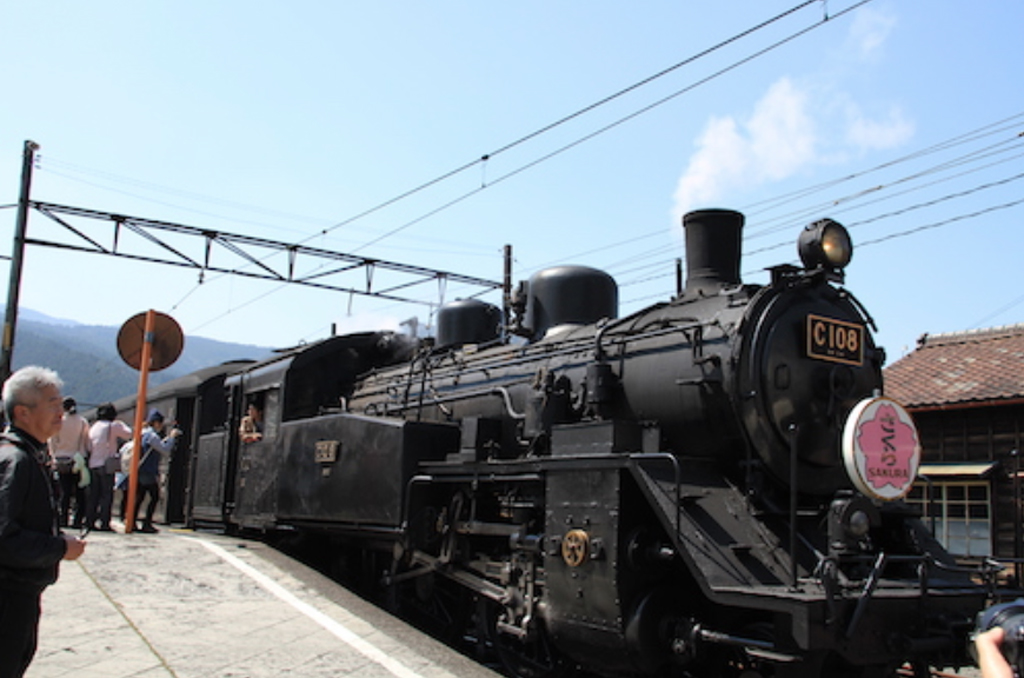
<JNR Steam Locomotive Class C11-190
Built in 1940. Operated mainly in western Japan during the JNR era. Was decommissioned in Kumamoto Prefecture, Kyūshū. Transferred to the Ōigawa Railway in 2001.
NR Steam Locomotive Class C11-227
Built in 1942. Higher performance version of the C10. Operated in Hokkaidō during the JNR era. Transferred to the Ōigawa Railway in 1956. Used as Thomas the Tank Engine.
JNR Steam Locomotive Class 56-44
Built in 1936. Operated in Hokkaidō during the JNR era. Used in Japan-occupied Southeast Asia during World War II. Returned to Japan and transferred to the Ōigawa Railway in 2011.
JNR Steam Locomotive C12-164
Built in 1936. Operated on the Chūō Honsen main trunk line. Currently out of commission for maintenance.


